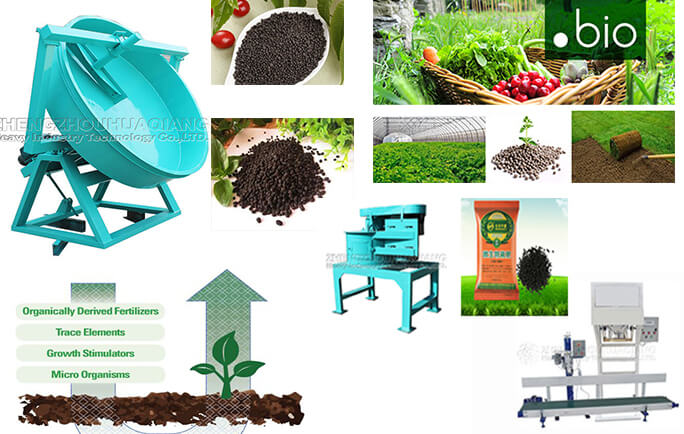The processing of commercial organic fertilizers using organic fertilizer equipment requires two steps: the pre fermentation treatment section and the deep processing granulation section. The complete set of automated organic fertilizer production equipment includes: manure dewatering machine, fermentation tipping machine, organic fertilizer crusher, organic fertilizer mixer, organic fertilizer granulator, rotary dryer, cooling machine, drum screening machine, automatic packaging machine, belt conveyor, coating machine, etc. There are also several types of configuration standards for organic fertilizer production lines. In order to give everyone a deeper understanding of organic fertilizer equipment, the following will introduce the functions and configuration standards of organic fertilizer equipment:

1. Hydraulic tank type tipping machine: Its equipment is used for the fermentation and tipping of materials, and this type of equipment has the advantages of high fermentation material accumulation, large tipping yield, and thorough material turnover. It is suitable for large-scale organic fertilizer fermentation, especially for organic fertilizer manufacturers with high land costs.
2. Dual axis horizontal crusher: aims to crush fermented materials to achieve uniformity. This equipment also has the advantages of reasonable structure, convenient installation, high efficiency, significant energy saving, durability, and easy maintenance.
3. Horizontal mixer: It is used to crush, mix, and mix the crushed materials with various raw materials such as nitrogen, phosphorus, potassium inorganic fertilizers, and other additives in a certain proportion.
4. Disc granulator: Granulate the mixed and evenly stirred materials, and shape the materials. Its advantage is that it is suitable for cultivating raw materials, especially for organic materials, and has stable granulation, high particle forming rate, and uniform appearance of finished particles that are not easy to break.
5. Drum dryer: It is used to further remove the internal moisture content of the processed material particles to meet the moisture content standard.
6. Rotary cooling machine: Cooling the dried granular material. Due to the high temperature of the dried material particles, it is difficult to store them, so cooling machine processing is required. The cooled granular material is easy to store and maintain its quality.
7. Drum screening machine: The particle material produced from the granulation and forming process will have certain differences in size, so it needs to be processed by the screening machine to screen out unqualified particles for secondary crushing processing.
8. Coating machine: Wrap a thin film on the surface of material particles, which is beneficial for strengthening the particle shape and selling very well, with a very bright and smooth surface.
9. Automatic packaging machine: After a series of processing, material particles can be transported to the equipment through a lifting machine for final weighing and packaging. The automatic packaging scale is controlled by a microcomputer and can achieve multi range measurement. It has high weighing accuracy, automatic clamping, sewing, automatic peeling, and detection functions, and its advantages are incomparable to manual packaging.
Organic fertilizer equipment can effectively solve the environmental pollution caused by organic waste in industries such as livestock and poultry breeding, reduce the eutrophication of surface water caused by pollution, improve the safety and quality of agricultural products, and lay a good foundation for human comprehensive consumption of green and organic food. The ecological and environmental benefits are quite significant.


.jpg)
.jpg)

.jpg)


.jpg)
